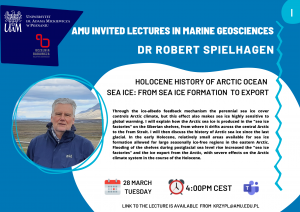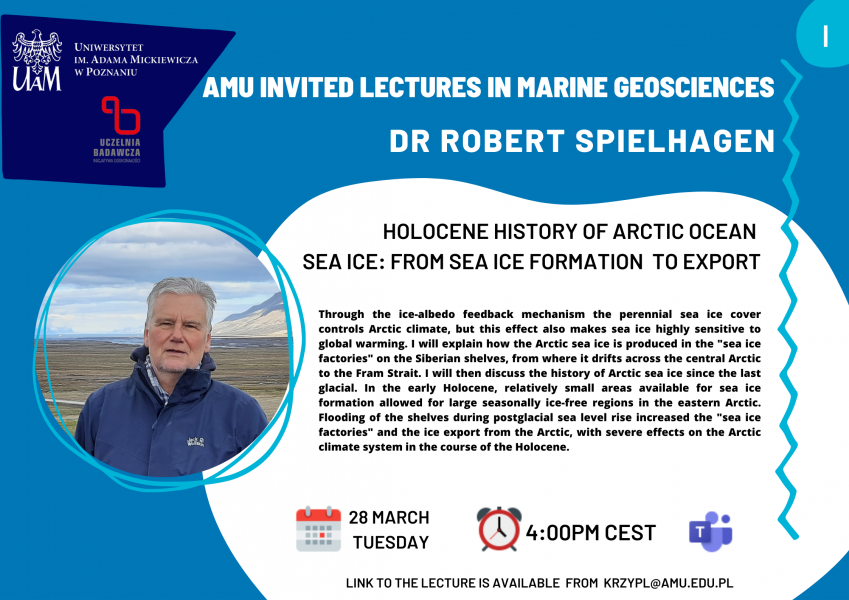Serdecznie zapraszamy do wzięcia udziału w wykładzie online pod tytułem “Holocene history of Arctic Ocean sea ice: From sea ice formation to export” , który wygłosi dr Robert Spielhagen (GEOMAR, Kiel, Niemcy). Wykład stanowi część serii “AMU Invited Lecture Series in Marine Geosciences I” organizowanej przez Uniwersytet im. Adama Mickiewicza w ramach programu IDUB. Wykład odbędzie się we wtorek (28 marca) o godzinie 16:00 na platformie MS Teams.
W przypadku problemów link jest dostępny od dra Krzysztofa Pleskota (krzypl@amu.edu.pl). Wykład i otwarta dyskusja po wykładzie będą w języku angielskim.
Informacja o wykładowcy i wykładzie:
Dr. Robert Spielhagen is Senior Research Scientist at the GEOMAR Helmholtz Centre for Ocean Research. He is a world-renowned expert in tracing climate change in the Arctic Ocean through geological time. Dr. Spielhagen authored about 80 scientific papers published in the most recognized journals (H=36), he has participated in over 20 ship-based expeditions and has supervised 7 PhD students. He was also Principal Investigator of more than 20 projects funded by German and international funding sources. He has also guest lectured at various institutions, including UNIS (The University Centre in Svalbard).
The abstract of the lecture:
Through the ice-albedo feedback mechanism the perennial sea ice cover controls Arctic climate, but this effect also makes sea ice highly sensitive to global warming. I will explain how the Arctic sea ice is produced in the "sea ice factories" on the Siberian shelves, from where it drifts across the central Arctic to the Fram Strait. I will then discuss the history of Arctic sea ice since the last glacial. In the early Holocene, relatively small areas available for sea ice formation allowed for large seasonally ice-free regions in the eastern Arctic. Flooding of the shelves during postglacial sea level rise increased the "sea ice factories" and the ice export from the Arctic, with severe effects on the Arctic climate system in the course of the Holocene.


